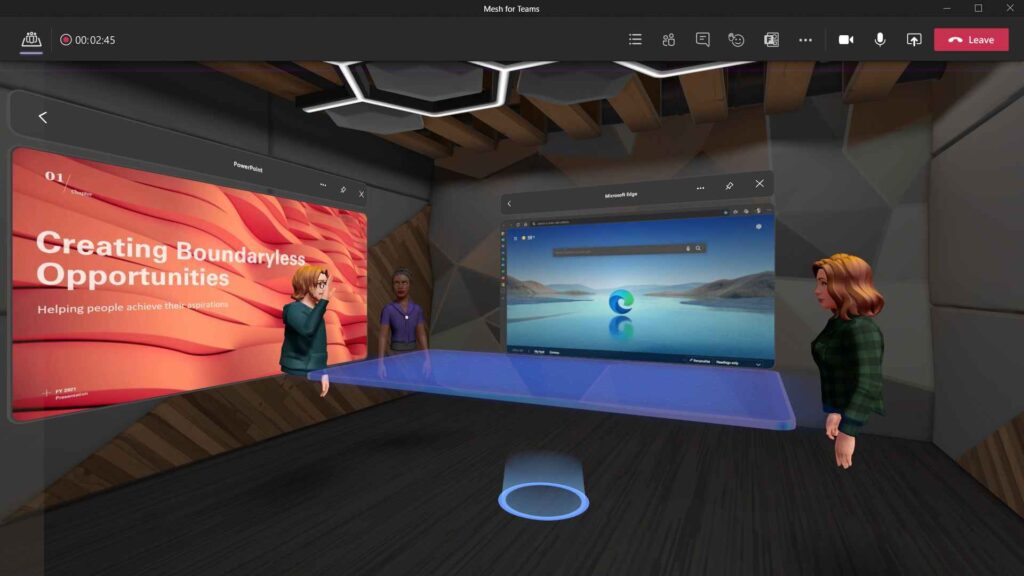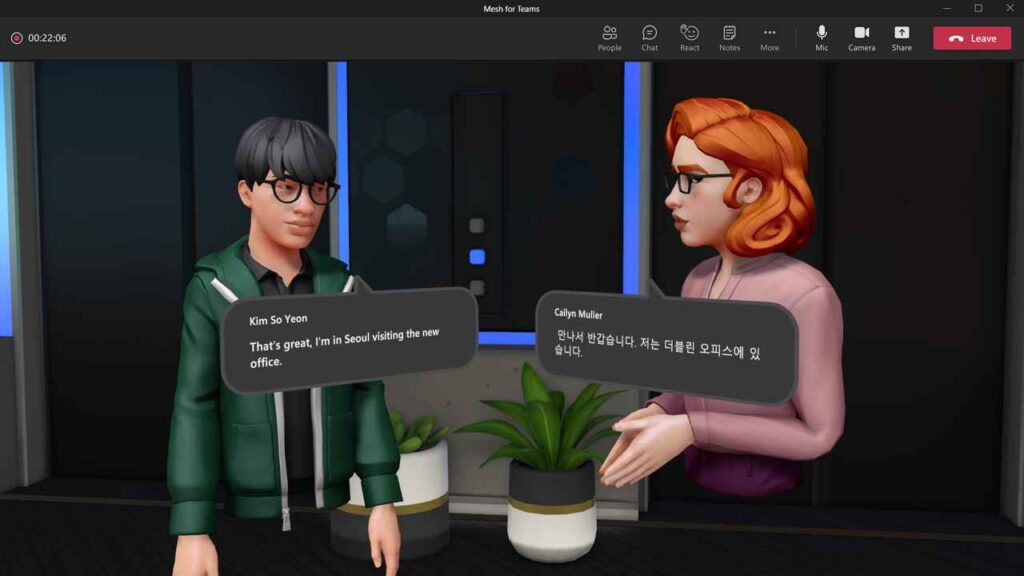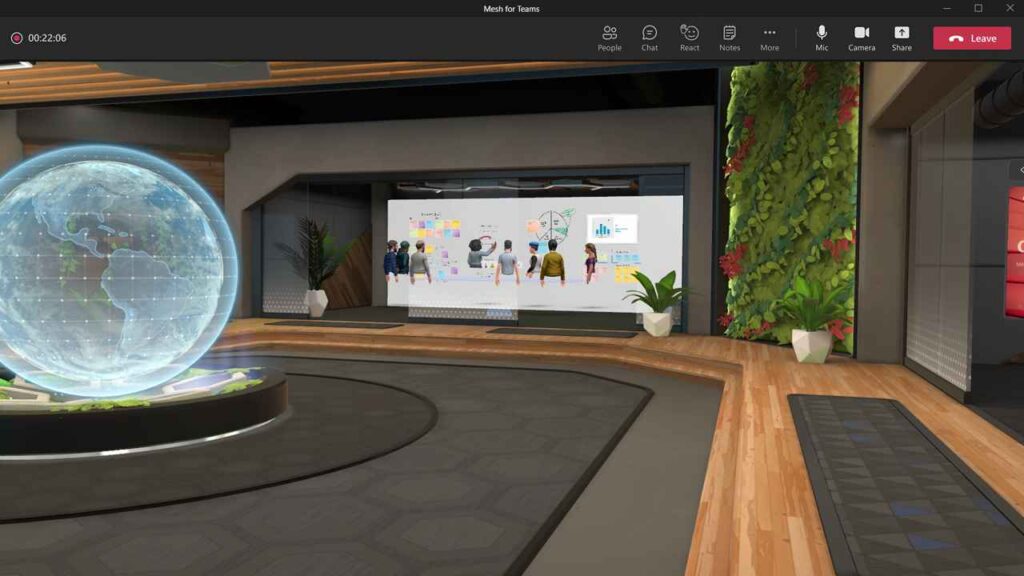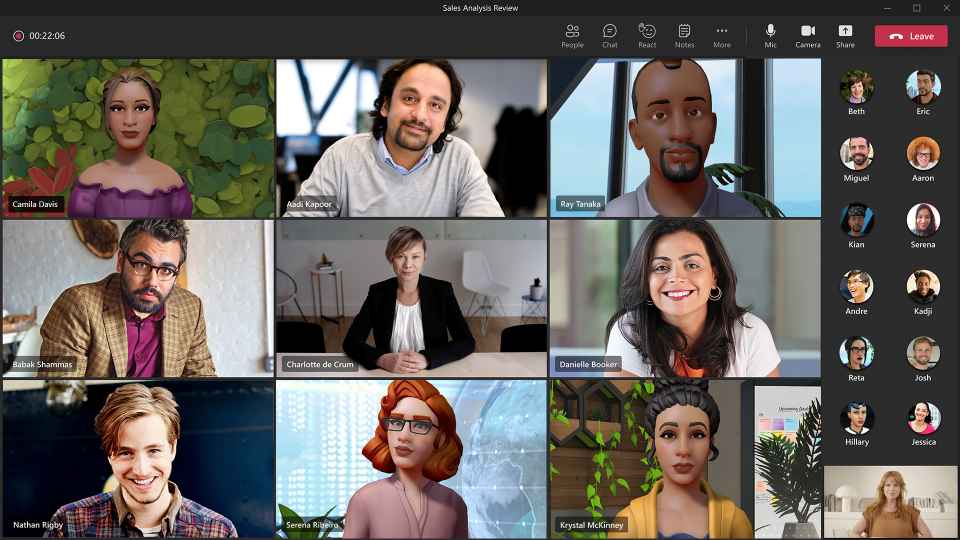
Microsoft joins the metaverse legion by announcing Tuesday the development of a Microsoft Mesh Mixed Reality inside Teams by directly inserting virtual experience platform Mesh to endorse the integration of virtual spaces for consumers and business.
The Big Tech titan revealed that following the overtake of the COVID-19 pandemic and the world’s shift towards remote working, generating a heavy global hybrid workforce, the company’s productivity experts studied two working trends concerning efficiency and office environment.
The Windows developer aims to deliver its users the ability to virtually connect with colleagues during remote meetings while incorporating the personalization of any work experience.
“Ongoing research in Microsoft’s research organization prove this out: people feel more present and engaged in meetings when everyone turns on their video camera,” the blog post stated.
“Microsoft today unveiled a solution to this problem that begins rolling out in 2022: Mesh for Microsoft Teams. The feature combines the mixed-reality capabilities of Microsoft Mesh, which allows people in different physical locations to join collaborative and shared holographic experiences, with the productivity tools of Microsoft Teams, where people can join virtual meetings, send chats, collaborate on shared documents, and more,” it added.
With this news, Microsoft and Meta seem to be going head-on against each other to deliver a different conceptualization of what their upcoming and future vision hold to the world, generally, and workforces particularly.
For some who have used Microsoft Mesh, the platform holds a futuristic approach to conduct meetings on Teams to enhance interactions following the pandemic, and it will come to fruition in early 2022.

Teams, which will include 3D avatars in its metaverse ecosystem, and will even be accessible without the virtual reality (VR) headset to conduct meetings. Avatars will represent a replicated customized embodiment of the user and can be presented in both 2D and 3D throughout any call.
“It’s not binary, so I can choose how I want to show up, whether it’s video or an avatar, and there’s a variety of customized options to choose how you want to be present in a meeting,” principal product manager for Microsoft Mesh, Katie Kelly, informed The Verge in an interview.
“We were able to interpret your vocal cues to animate that avatar, so it does feel present, and it does feel like it’s there for you,” she added.
The fruition of the giant’s latest project will mostly rely on artificial intelligence (AI) to hear and monitor users’ voices to be mirrored for the avatar. Once the meeting attendees shift to a much more advanced 3D meeting, the avatars will also be able to raise their hands.

The company’s integration between Mesh and realistic spaces was its main focus, as the primal goal was to incorporate digital reality with businesses, to visualize a realistic space that would set the space for networking, socializing, and even utilize Microsoft apps to augment collaboration on future projects.
With the central theme directed at VR and augmented reality (AR), the merger between the technologies will deliver various devices with access to any user through the avatars.
“I think the thing that really separates how Microsoft is approaching metaverse and our own experience is starting with the human experience, so the feeling of presence, talking to somebody, making eye contact, and reactions are going to be important,” Kelly elaborated on the matter.
In parallel, the tech titan will develop translation and transcription support so users can conduct meetings in a virtual space on Teams with any colleague from all around the world while breaking all language barriers.

Facebook’s recent remodeling to accommodate its latest vision, then following Microsoft’s latest Mesh announcement, is showing the world the extensive speed digitalization is hastily gripping the world. The captivation of the new digital era upholds a multitude of modernized approaches concerning private and businesses entities.
The integration of digital reality and work will open wider doors to how future enterprises will conduct their businesses with the assistance of technology, revealing a future where global collaboration and worldwide workforce incorporation will hold a much more vital status.